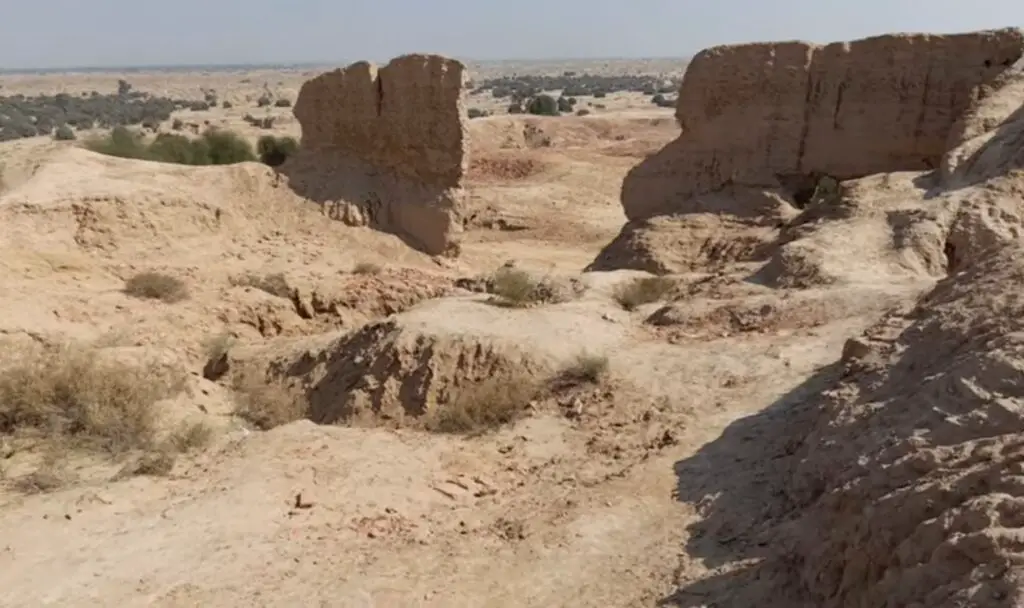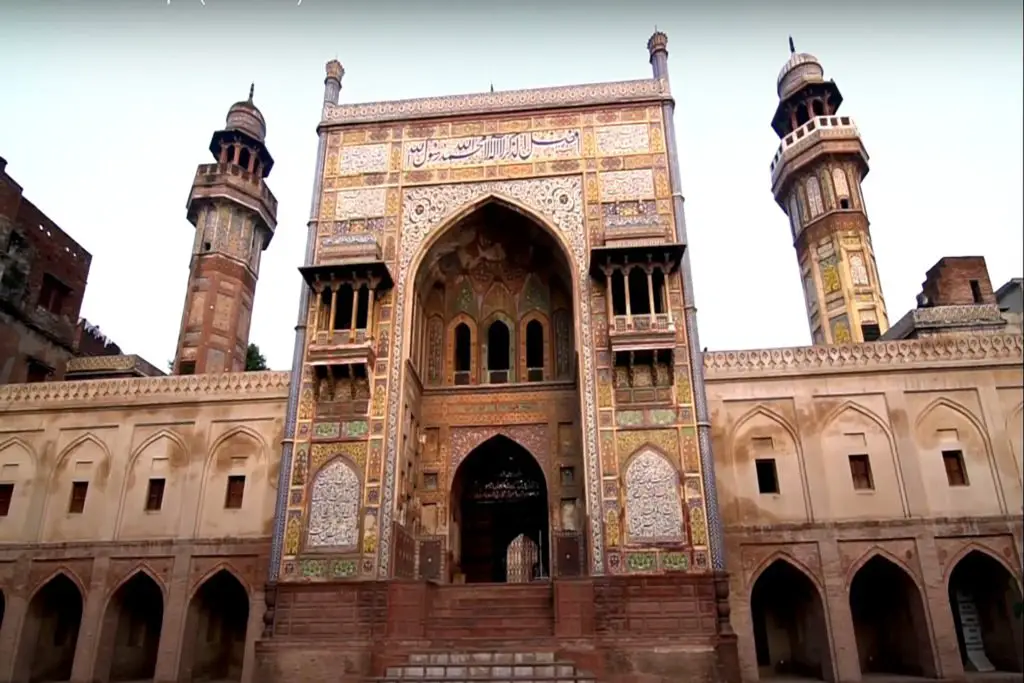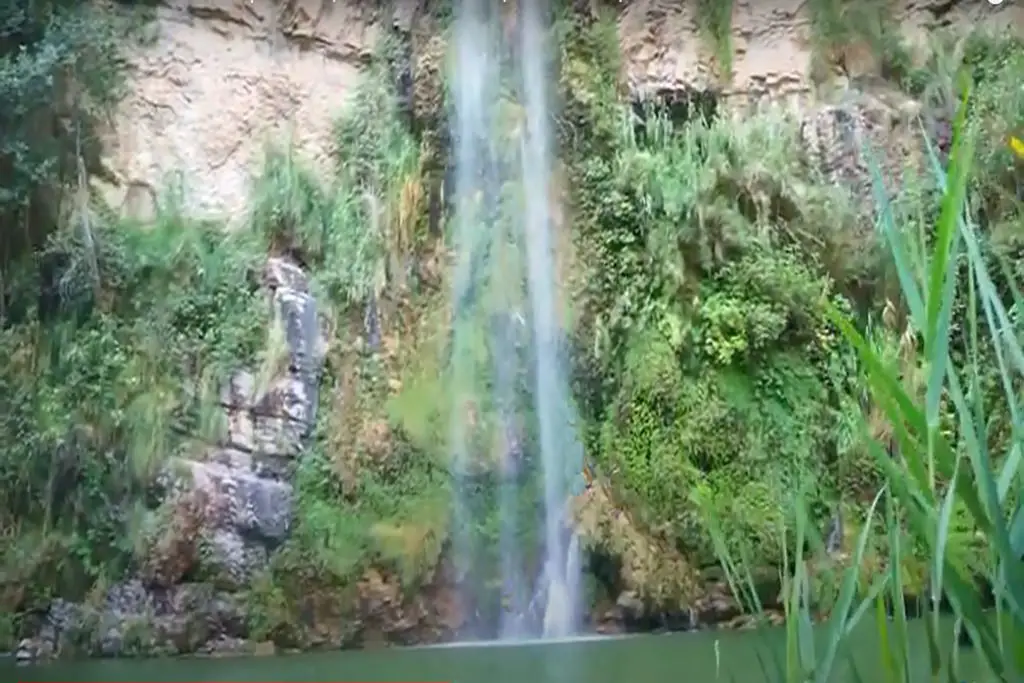Marot Fort is a historical fort located in the Cholistan Desert of Punjab, Pakistan. The fort was built during the reign of the Nawabs of Bahawalpur, in the late 18th century. Marot Fort is known for its unique architecture and strategic location, which made it an important military stronghold during its time.
Marot Fort Location
Qila Marot Fort is located in the Bahawalnagar District of Punjab, Pakistan, holds significance as it sits at the border between India and Pakistan. Situated approximately 50 km from Fort Abbas, 160 km from Bahawalnagar, and 100 km from Bahawalpur, Marot serves as a hub of economic and cultural activity in the region. With an estimated population of 20,000 inhabitants, the city contributes to the overall population of the district, which stands at around 280,000.
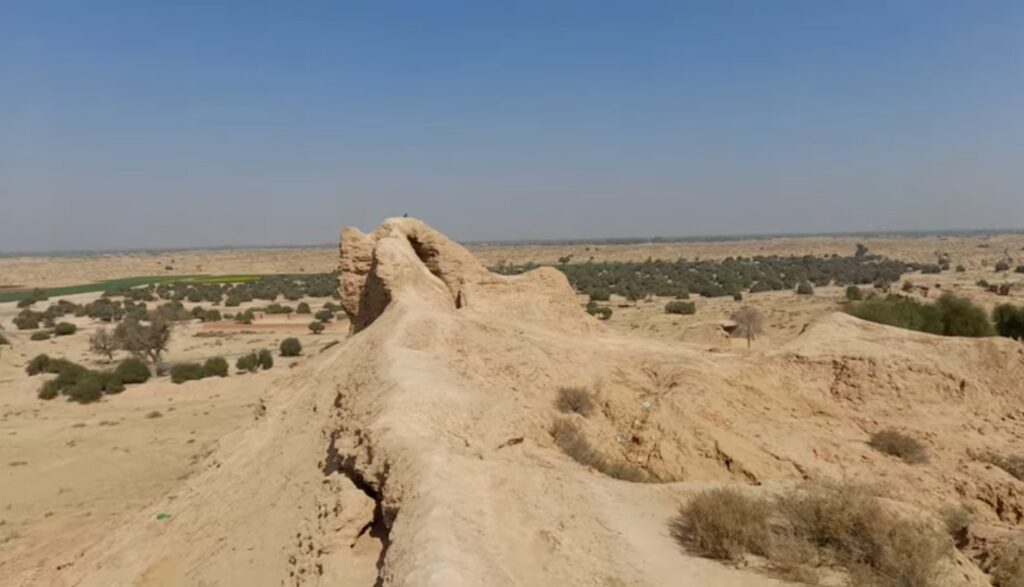
Marot Fort History
Marot Fort, once a symbol of ancient rulers’ splendor, has witnessed the passage of time, resulting in the disappearance of a major portion of the fort. Its foundations were laid by the Ruler of Chitto, and it existed during the time when the River Sarasvati flowed. The fort derived its name “Marot” from the Hindu god Marot, who belonged to the court of Indra and was associated with the god of windstorms. Notably, in 1960, India manufactured a jet plane named “Marot,” which adds an interesting connection.
The names Marot, Hakra, Ghaggra, and Pholra are derived from the Sanskrit language, further establishing their connection with ancient Indian history. Marot Fort was strategically built along the banks of the Hakra/Ghaggra River. Ancient texts described the fort’s magnificence and grandeur. During the reign of Sher Shah Suri, these forts underwent repairs as they were strategically located along the passage connecting Multan and Delhi. The fort gained more importance when Akbar, the Mughal emperor, sought shelter here after the death of Sher Shah Suri, and the Mughals reclaimed the throne.
Akbar’s stay at Marot Fort left its mark, with remnants of his presence still visible today. One such testament is the Mardan Majid, a mosque constructed by Akbar that still stands within the fort’s premises. An inscription on the mosque indicates that it was built by Jalaluddin Akbar in the year 926 Hijri (Islamic calendar). The construction of the mosque involved the use of kilns with specific dimensions, showcasing the craftsmanship of artisans from that era. Notably, the wooden doorways of the mosque feature embossed circular flower designs, adding to its artistic allure.
Although a significant portion of Marot Fort has disappeared over time, remnants such as the Mardan Majid mosque provide glimpses into the fort’s rich history and the presence of prominent historical figures like Akbar. These remnants stand as a testament to the architectural grandeur and cultural heritage of Marot Fort, connecting it with ancient Indian history and leaving visitors captivated by its splendor.
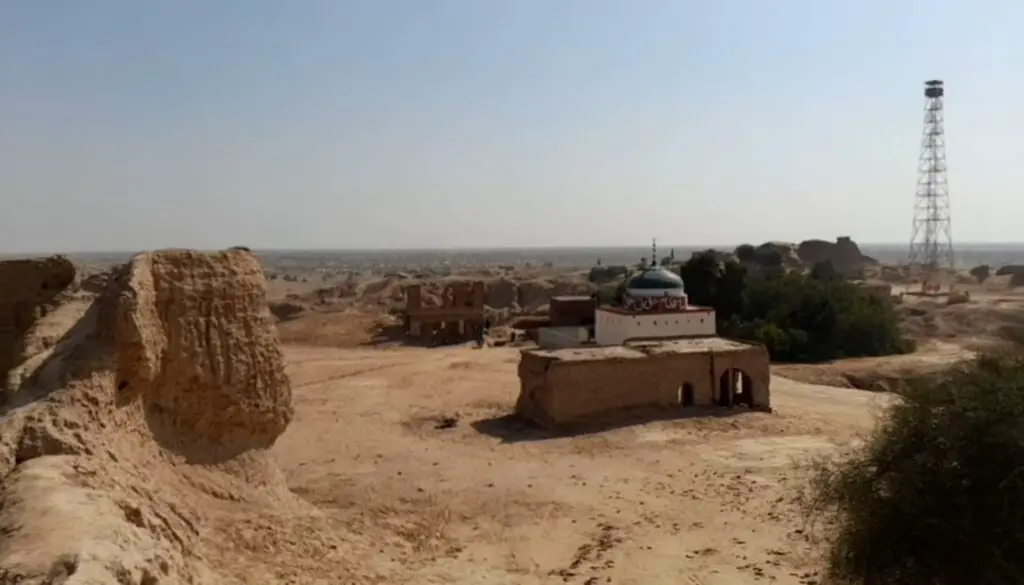
Marot Fort Architecture
The fort is constructed on a small hill, which offers a commanding view of the surrounding desert landscape. It was built using locally sourced materials, such as sandstone and mud, which were readily available in the desert region. The fort’s walls are nearly 20 feet high and are reinforced with bastions and turrets, providing ample protection to the occupants within.
The interior of the fort is equally impressive, with a maze of chambers, courtyards, and halls. The architecture of the fort is a blend of Mughal and Rajput styles, with intricate motifs and designs adorning the walls and ceilings of the fort.
The strategic location of the fort made it an important stopover for caravans traveling across the Cholistan desert. The fort was also an important center of trade and commerce, with goods such as spices, textiles, and precious metals passing through its gates.
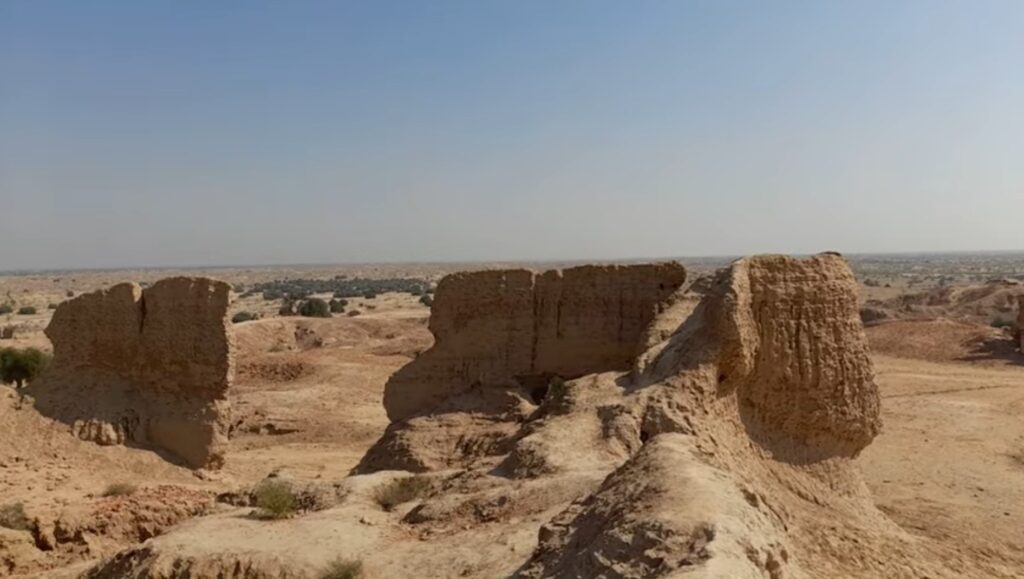
City of Marot
Marot is known for its notable forts, including Marot Fort, Jaamgarh, Mojgarh, and Meergarh, which serve as a testament to the historical and architectural heritage of the area. These forts offer insights into the region’s past and attract visitors interested in exploring the rich history of the region.
The economy of Marot and its surrounding areas primarily revolves around agriculture, with a significant number of people engaged in farming. The major crops cultivated in the region include wheat, cotton, mustard, and sugar cane. Agriculture plays a vital role in sustaining the local economy and providing livelihoods for the residents.
In terms of language, the majority of the population in Marot speaks Punjabi and Urdu. These languages reflect the linguistic diversity and cultural fabric of the region, serving as a means of communication and preserving the local heritage.
Marot, with its strategic location, historical forts, agricultural significance, and linguistic diversity, contributes to the cultural and economic landscape of the Bahawalnagar District in Punjab.
Today, Marot Fort is a popular tourist destination for those interested in history and architecture.
In conclusion, Marot Fort is a remarkable example of the architectural and cultural heritage of Punjab, Pakistan. Its strategic location, unique architecture, and historical significance make it an important landmark of the Cholistan desert and a must-visit destination for history and architecture enthusiasts.

